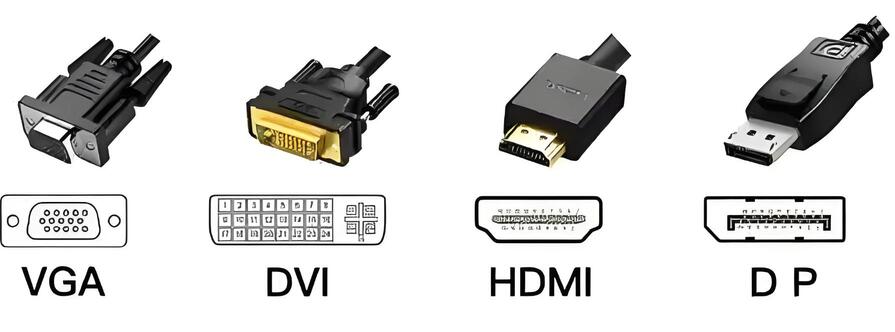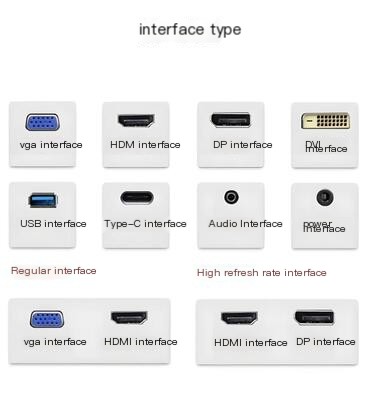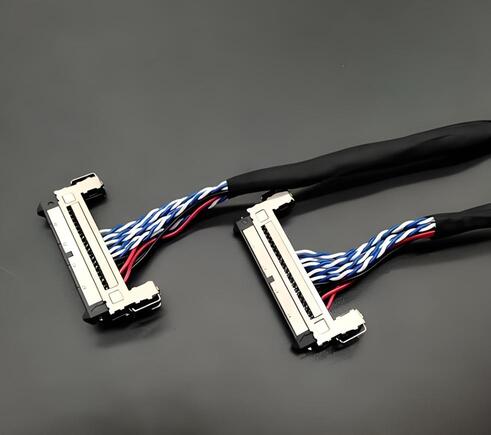
In today's digital age, LCD displays are widely used in various electronic devices, from smartphones and tablets to computer monitors and industrial control terminals. LCD display interface technology, acting as a bridge between devices and displays, plays a crucial role in determining display effects, enabling functions, and influencing the overall performance of devices. A deep understanding of this technology not only helps electronic device manufacturers optimize product designs but also enables consumers to make more informed decisions when purchasing products.
LCD display interface technology is responsible for transmitting image data, control signals, and other information between a device's graphics processing unit (GPU) or other signal sources and the display. It directly determines key performance indicators of the display, such as refresh rate, resolution support, color depth, and response speed. For example, high - bandwidth interface technologies can enable the smooth transmission of 4K or even 8K ultra - high - definition videos, providing users with a stunning visual experience. Fast signal transmission speeds can reduce image latency and stuttering, which is particularly important in scenarios like gaming and video playback. From the perspective of device manufacturers, appropriate interface technology can reduce design complexity, improve production efficiency, and enhance product market competitiveness.

With the continuous advancement of display technology, such as the popularization of high - resolution and high - refresh - rate displays, the requirements for LCD display interface technology are also constantly increasing. According to data from market research institutions , the global market size of LCD display interface technology is showing a steady growth trend. In fields such as consumer electronics, automotive electronics, and industrial automation, the application of new interface technologies is constantly expanding, driving the innovative development of related industries.
HDMI (High - Definition Multimedia Interface) is one of the most widely used interfaces currently. It can transmit high - definition video and multi - channel audio signals simultaneously and supports various resolutions, with a maximum of up to 8K@60Hz or even higher. The HDMI interface uses a digital transmission method, which reduces signal transmission losses and ensures the quality of images and sound. It has various interface types, including standard HDMI interfaces, Mini - HDMI interfaces, and Micro - HDMI interfaces, to meet the needs of different devices. For example, in home theater systems, the HDMI interface is used to connect devices such as televisions, game consoles, and Blu - ray players to achieve high - quality audio - video transmission.
The DisplayPort interface is an interface technology mainly applied to computer monitors . It supports high resolutions and high refresh rates and can meet the extremely high display performance requirements of scenarios such as professional graphic design and e - sports gaming. The DisplayPort 1.4 version can support 8K@60Hz and 4K@120Hz display outputs and has a powerful multi - screen display function. Through the daisy - chain connection method, it can drive multiple displays simultaneously. In addition, the DisplayPort interface also supports the USB - Type - C interface form, which facilitates device connection and use and is widely used in devices such as thin and light laptops and high - end graphics cards.
LVDS (Low Voltage Differential Signaling) is a low - voltage differential signal transmission interface commonly used for connecting liquid crystal panels and driver boards. It has advantages such as low power consumption, high - speed transmission, and strong anti - interference ability and can effectively reduce electromagnetic interference (EMI). The LVDS interface transmits data through differential signals, with signals of opposite polarities transmitted on a pair of wires. The receiving end restores the data by comparing the difference between the two signals. It supports a wide range of resolutions and is commonly used for internal connections in devices such as laptops and liquid crystal displays to ensure that the display can stably receive image data.

In smartphones and tablets, due to their small size and low - power requirements, interfaces that are compact and support high - speed data transmission are usually adopted, such as the USB - Type - C interface. It can not only transmit video signals but also be used for charging and data transfer. In televisions and home theater equipment, the HDMI interface is the first choice due to its synchronous audio - video transmission and wide compatibility, meeting users' demands for high - definition videos and immersive audio experiences.
For computer monitors, the DisplayPort interface is highly favored by user groups seeking high resolutions and high refresh rates, especially e - sports gamers and professional graphic designers. In ordinary office scenarios, although the VGA (Video Graphics Array) interface is gradually being phased out, it still has a certain market share in some old - fashioned devices and budget - constrained office environments due to its good compatibility and low cost. At the same time, the HDMI interface is also widely used to connect office computers and monitors to meet the daily office display requirements.
Industrial control equipment has extremely high requirements for stability and reliability. The LVDS interface is widely used in industrial displays due to its strong anti - interference ability and low power consumption. In addition, some industrial scenarios also use serial communication interfaces such as RS - 232 and RS - 485 to transmit control signals and a small amount of display data, ensuring the stable operation and precise control of industrial equipment

With the continuous development of technology, LCD display interface technology will develop towards higher bandwidths, lower power consumption, smaller sizes, and stronger compatibility. In the future, interface standards that can support even higher resolutions (such as 16K) and higher refresh rates (such as over 240Hz) may emerge, while achieving faster data transmission and more efficient energy utilization. In addition, interface technology will be deeply integrated with wireless transmission technology to achieve wireless high - definition display, further enhancing the user experience and providing more convenient visual solutions for future intelligent life and work scenarios.
LCD display interface technology, as a key link connecting devices and displays, plays an irreplaceable role in promoting the development of display technology and meeting users' visual needs. Through continuous innovation and optimization, it will continue to bring us more exciting visual experiences and lead the development trend of future visual technology.
Name: lily
Mobile:185 7332 9919
Tel:185 7332 9919
Whatsapp:8618573329919
Email:sales@huayuan-lcd.com
Add:Factory No.9, Zhongnan High-tech Intelligent Manufacturing Industrial Park, Tianyuan District, Zhuzhou,Hunan, China, 412000